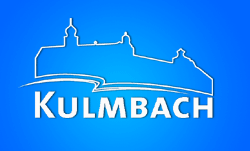 places of interest in KulmbachPlassenburg CastlePlassenburg Castle - once stronghold of the state an the residence of the Zollern Margrave - also houses several museums. Get lost in the past in the thick of an historic battle, impressive gold chambers a Margrave rooms and discover world history in whole new way!  The Rathaus (town hall)The Rathaus (town hall) with its unique Rococo facade is an eyecatcher of the historic Markplatz (market square).  The bath house The bath house was first mentioned in the Kulmbach registry in 1398. It was used as a public baths up until the 19th century. In 1999 it was reopened as a gallery and musem.  The White TowerThe White Tower, part of the town wall, dates back to the early 14th century and formed part of the town defences.  The Red Tower The Red Tower is part of the towns fortifications from the 13th century. The town whistler´s flat can be found in the top floor.  The Hospital ChurchThe Spital Church is the work of the master builder Johann Georg Hoffmann. It took from 1738 - 1749 to complete.  The Petri Church The Petri Church was built from 1439 as a late gothic hall church. In 1878 "St. Petri"; was given new furnishings in neo gothic style. The church tower clock, instead of numerals, has the words „Wachet - Betet" be watchful and pray.  The Langheimer courtyardThe Langheimer courtyard, built in the 17th century, was commissioned by the Zisterzienser monastery using plans from Johann Leonard Dientzenhofer. It was used for the administration of the monasteries produce.  The Schlösslein The Schlösslein was originally a part of the castle. Its present day image is the result of the master builder Caspar Vischer in 1571.  The Zinsfelder Well The Zinsfelder Well was sculptured by Hans Georg Schlehdorn in 1696 and painted by the artist Lorenz Reincke.  The Luitpold well The market place with the Luitpold well formed like a courtyard is from the 13th century. The Luitpold well was built in honour of the prince regent in 1898.  |  | |  |

